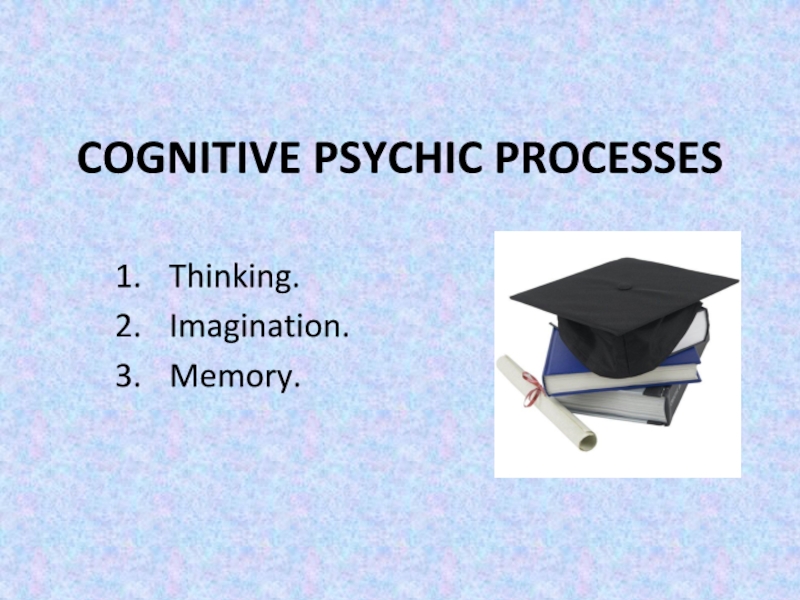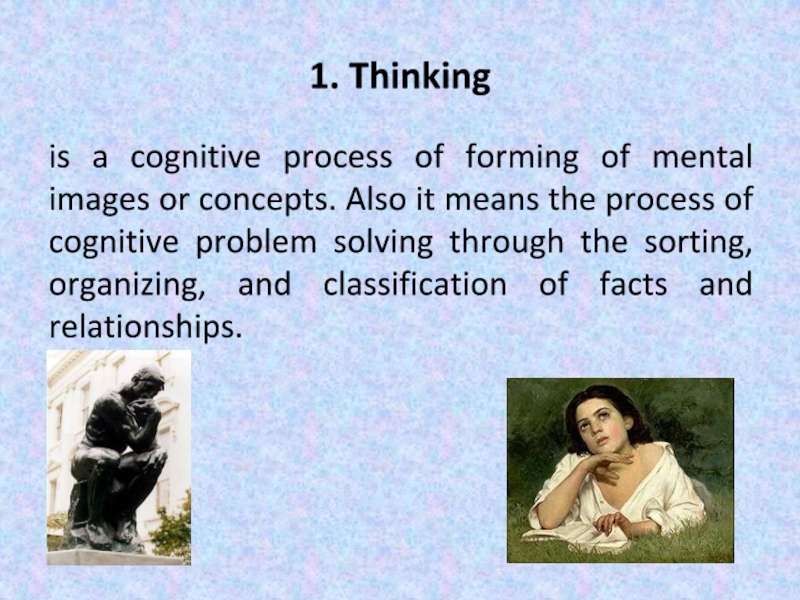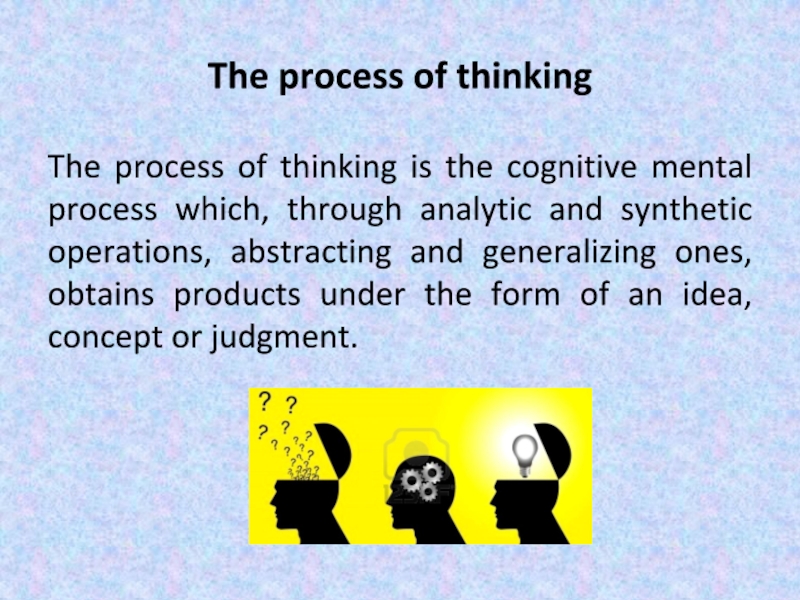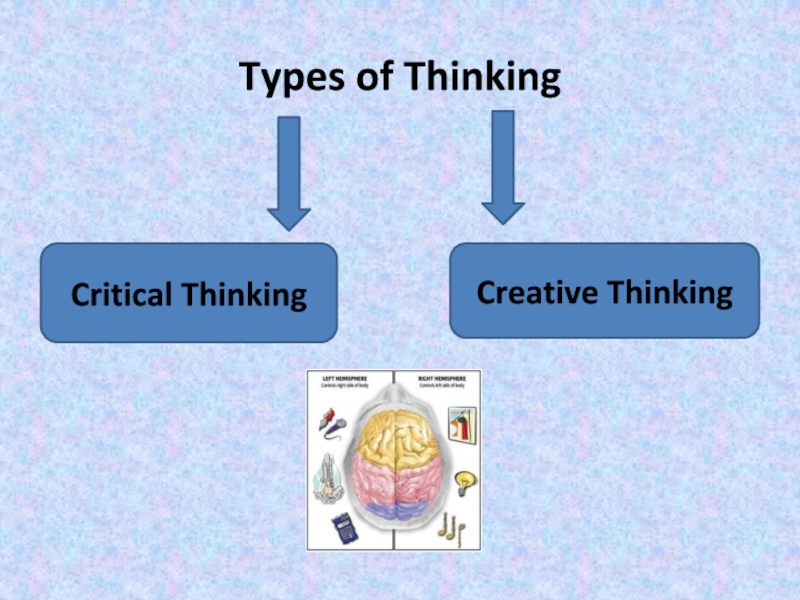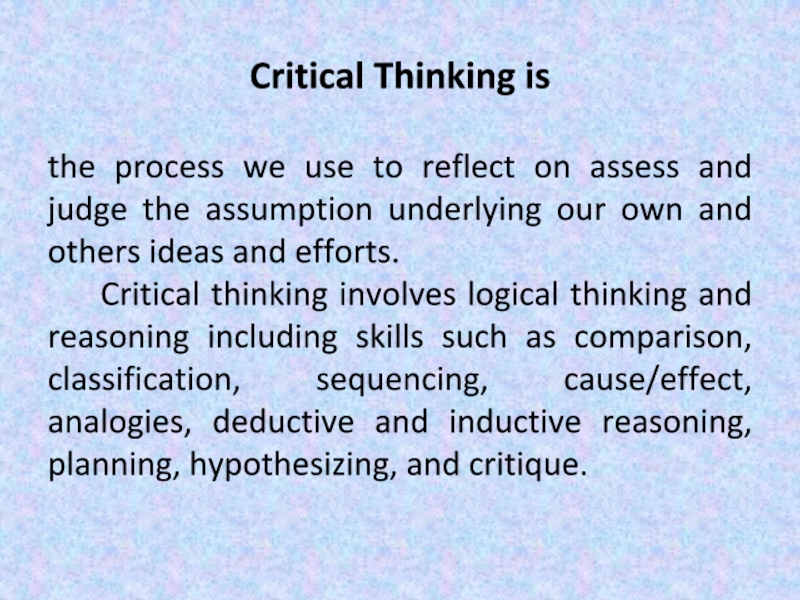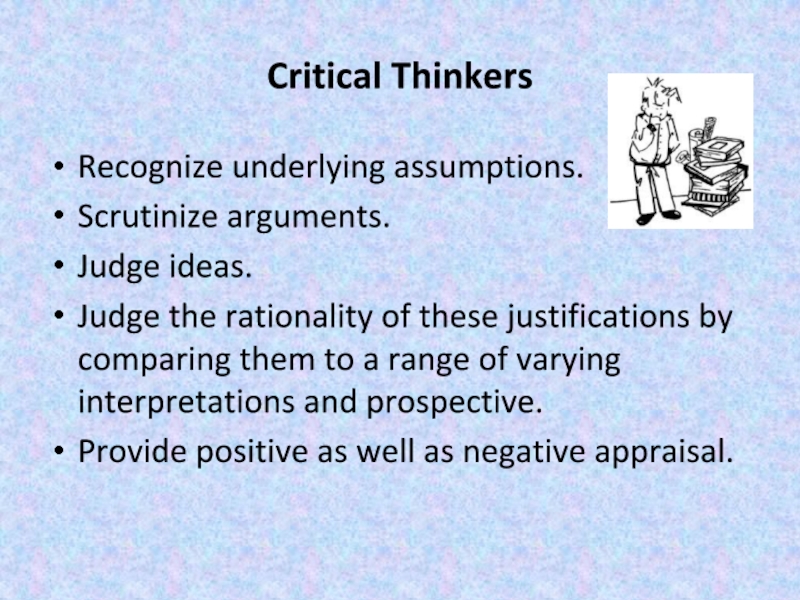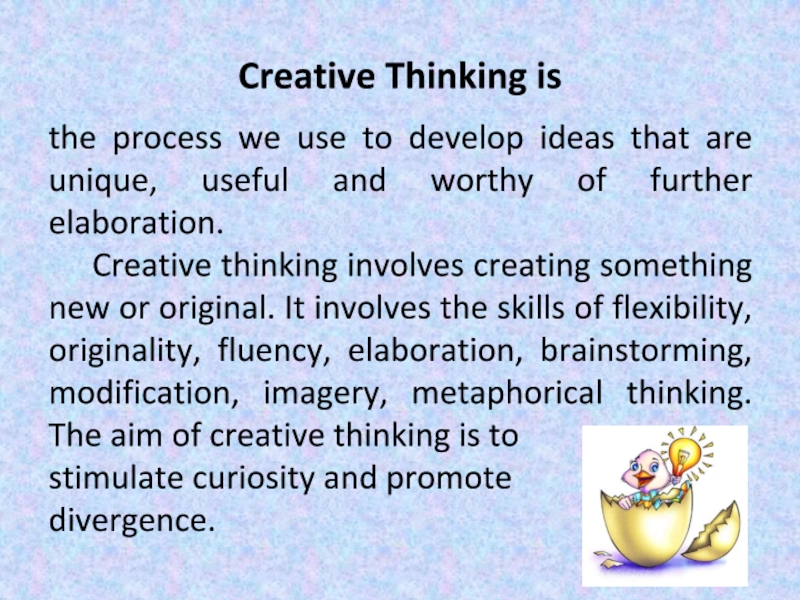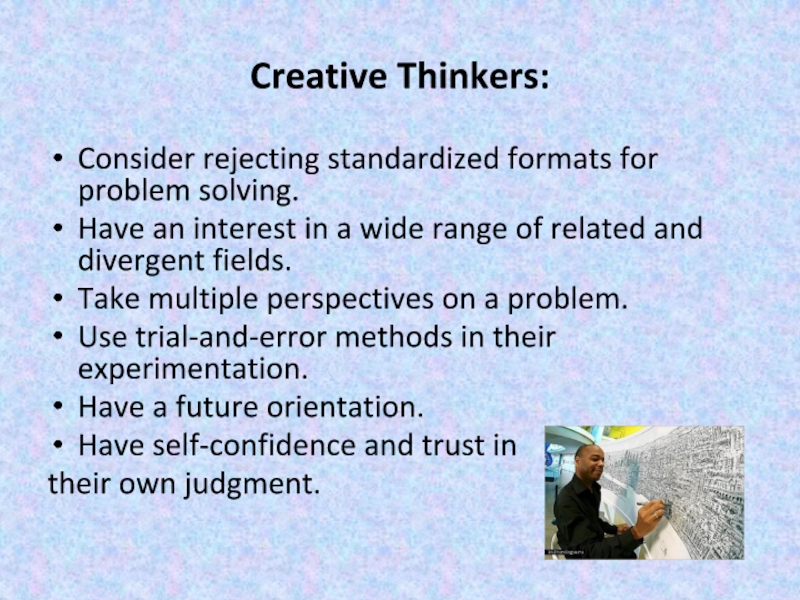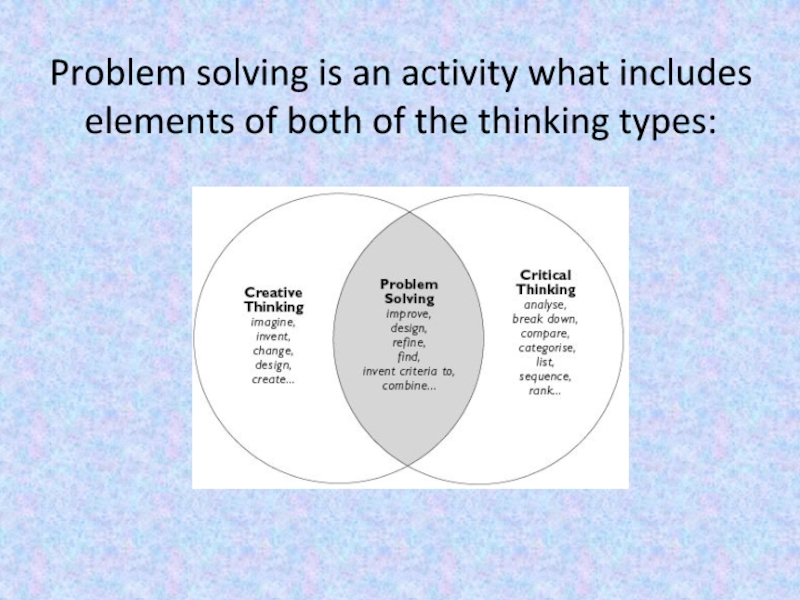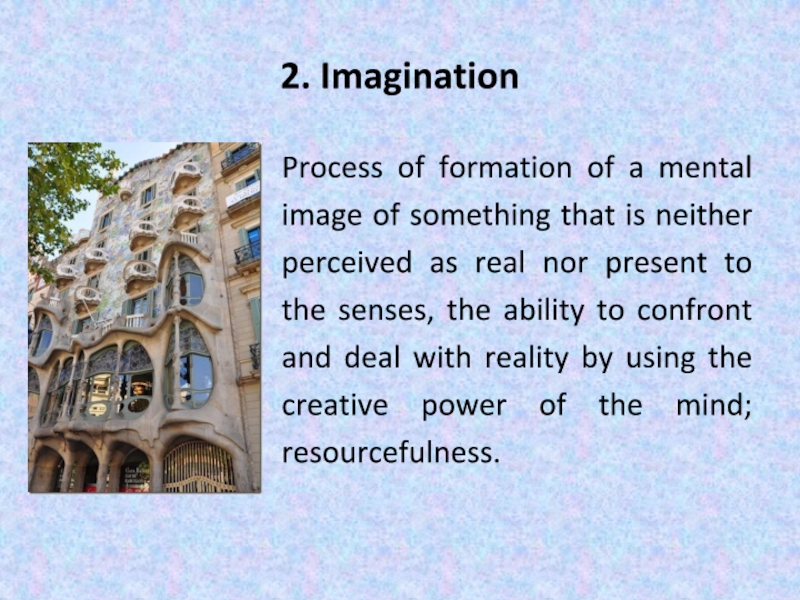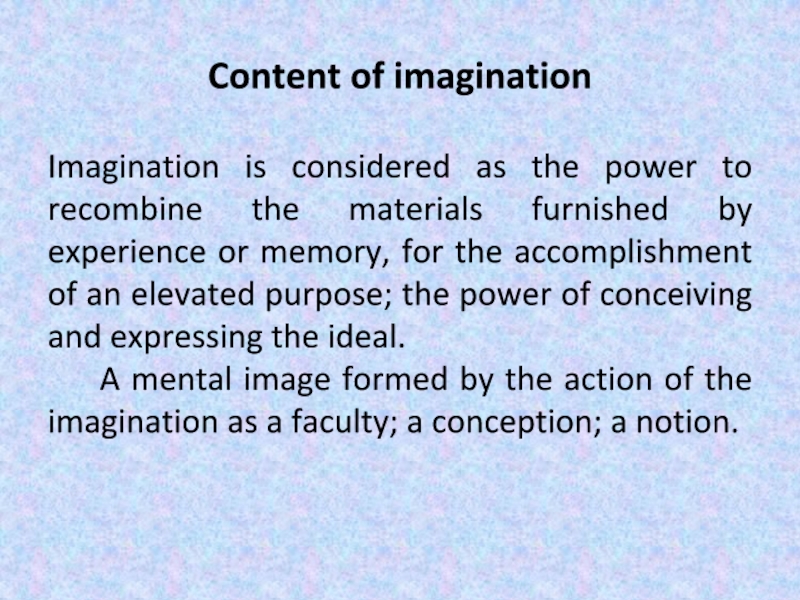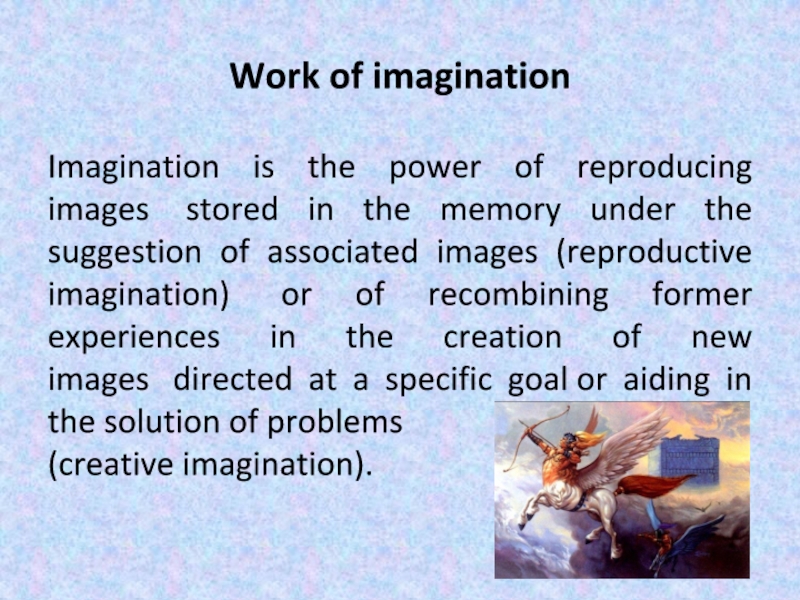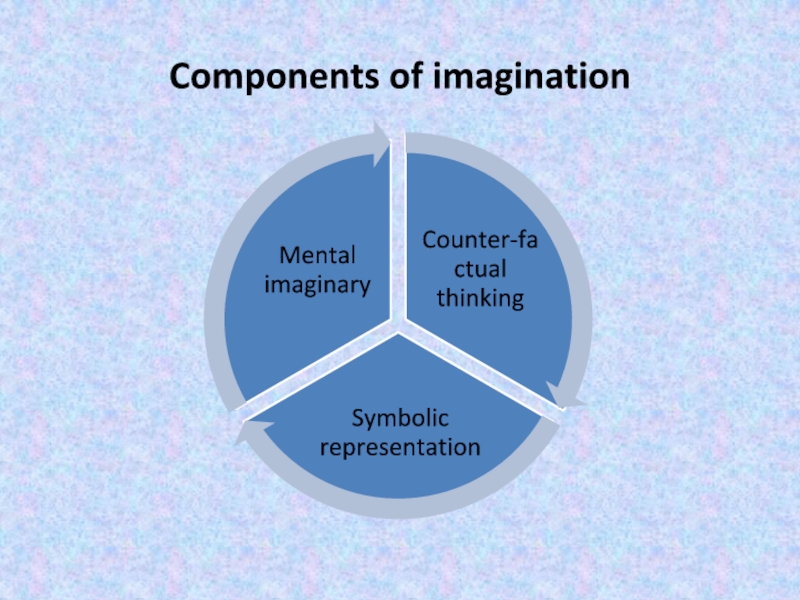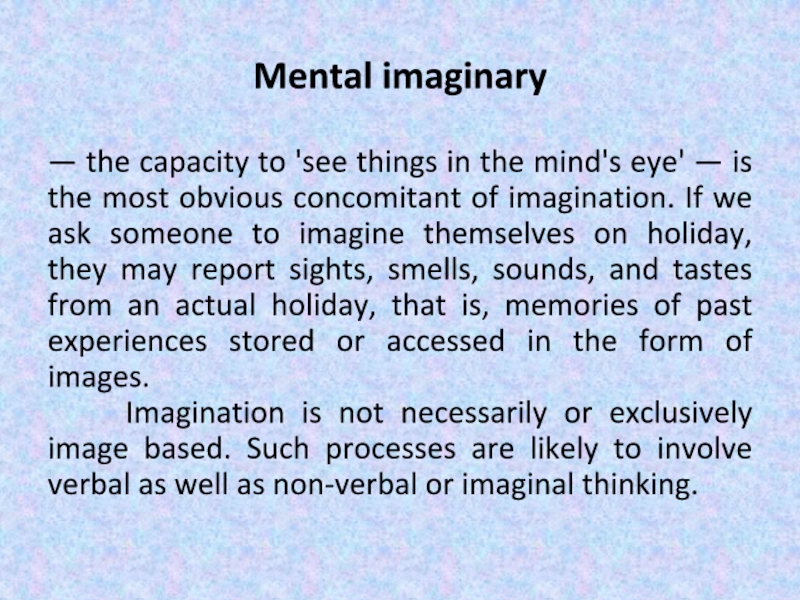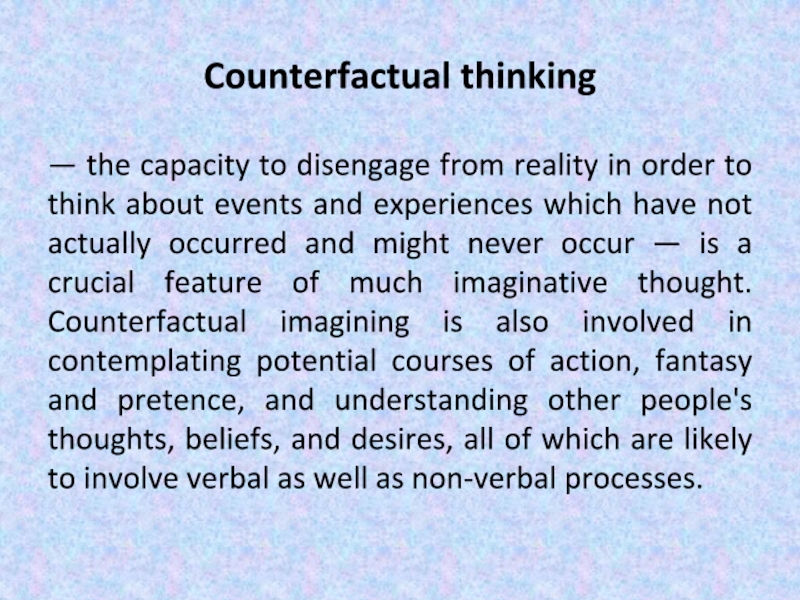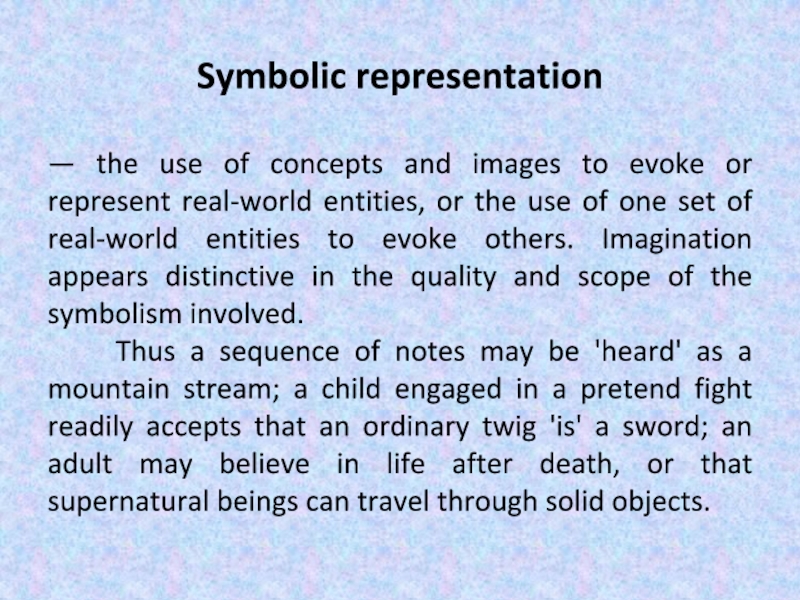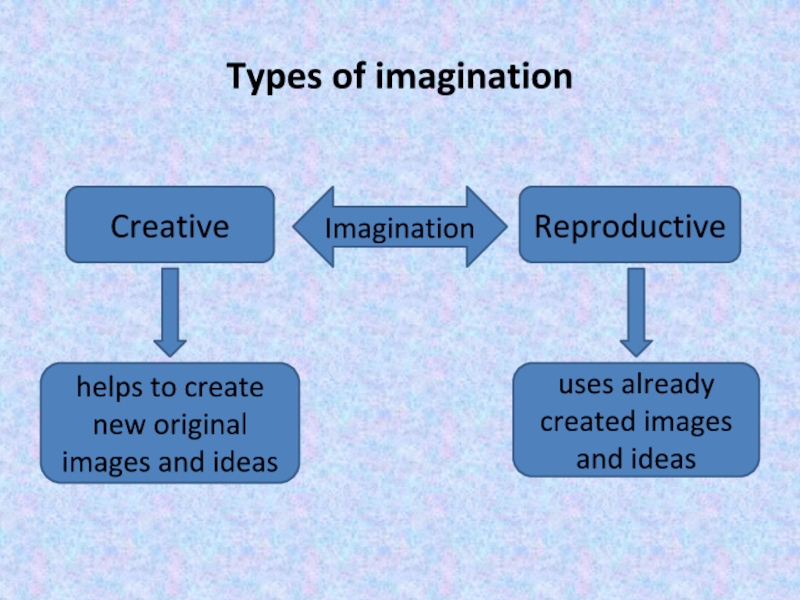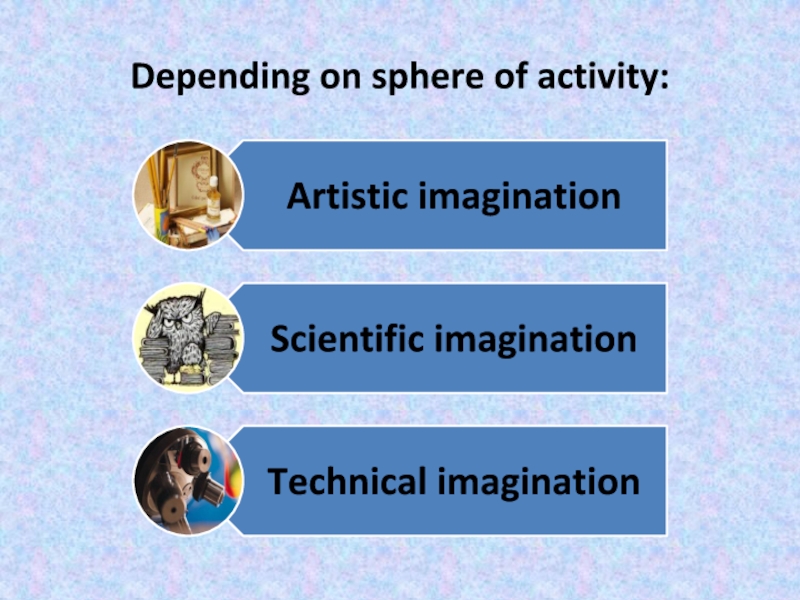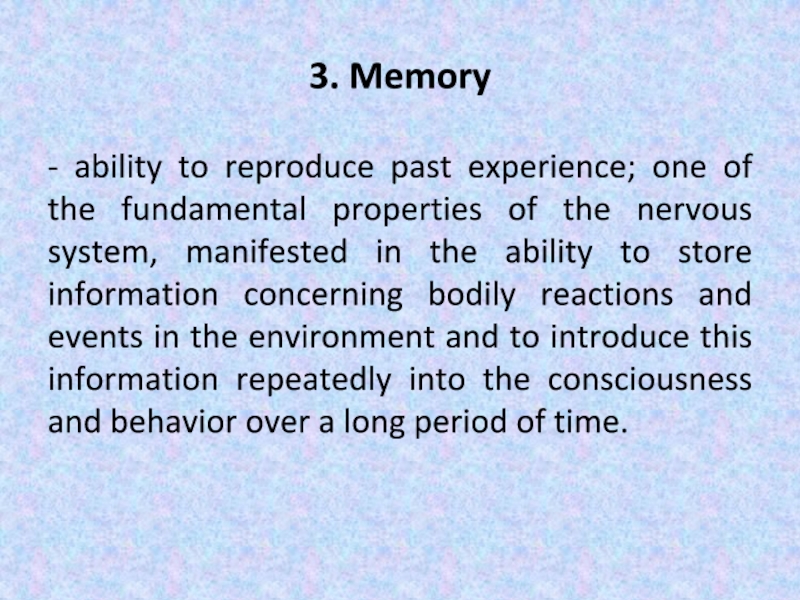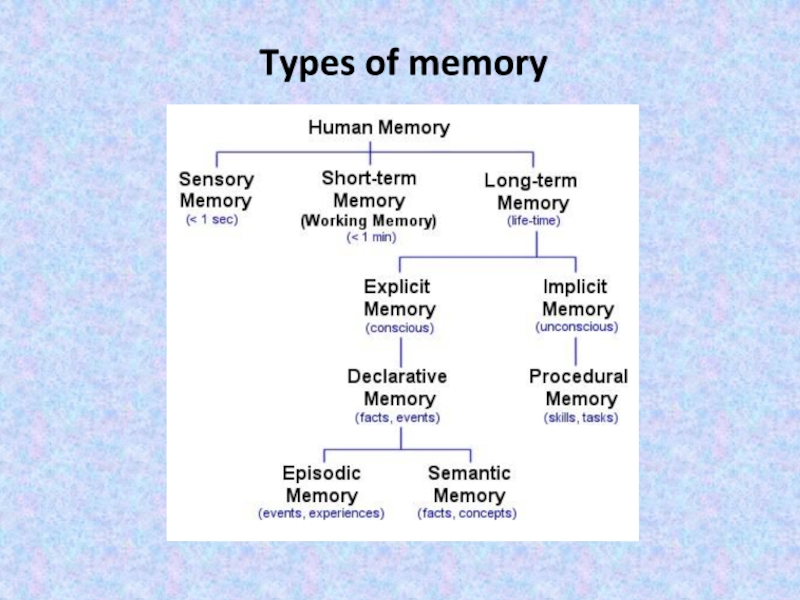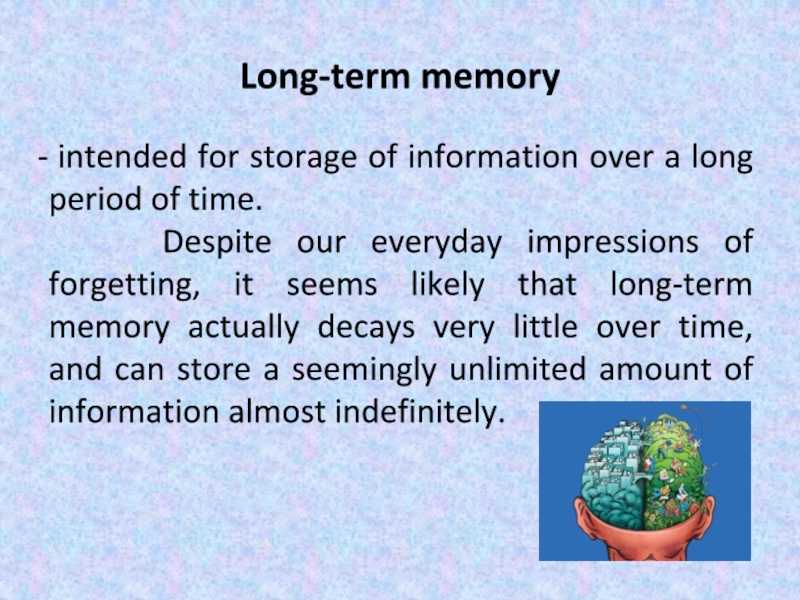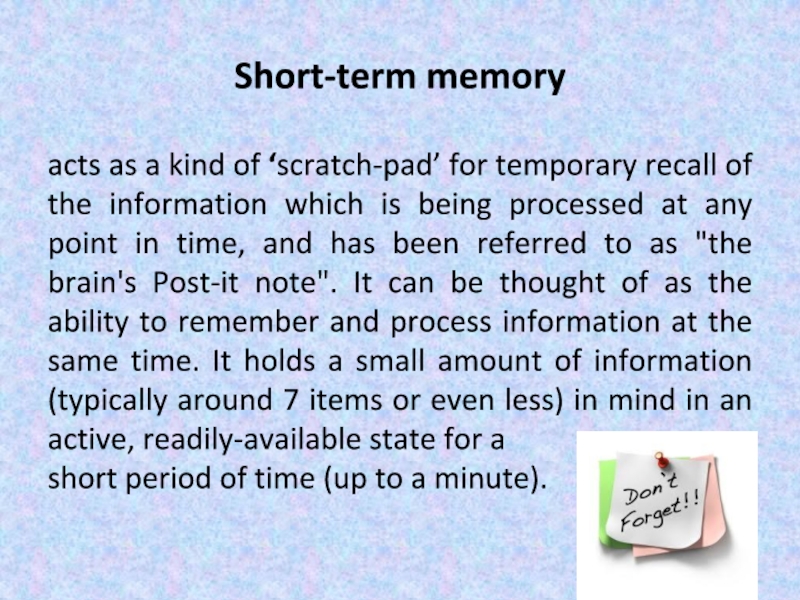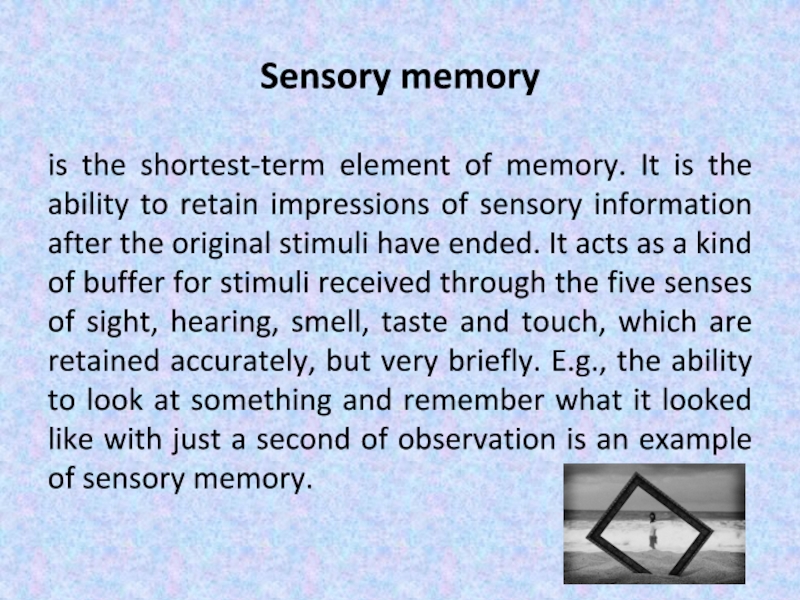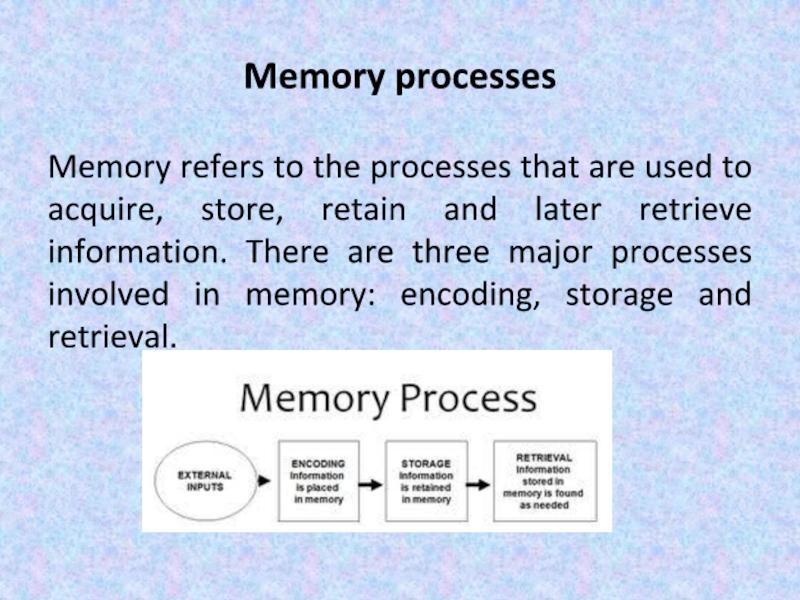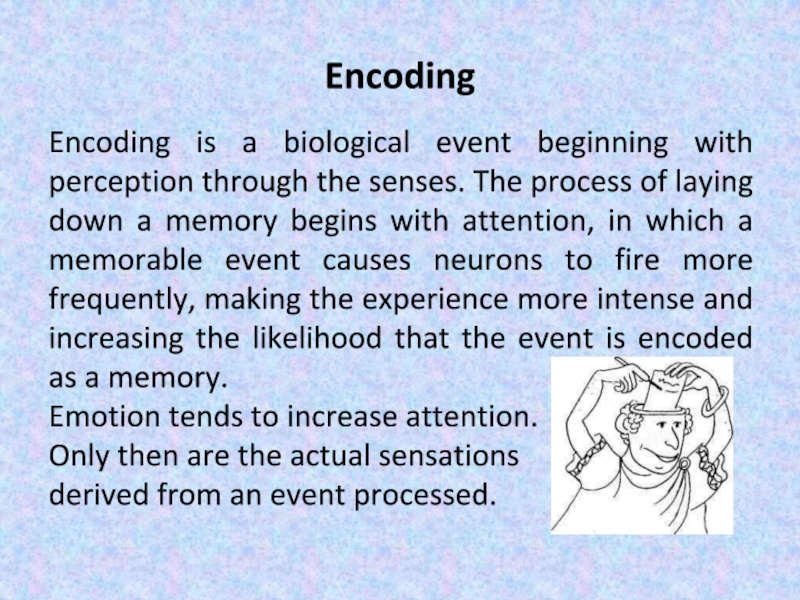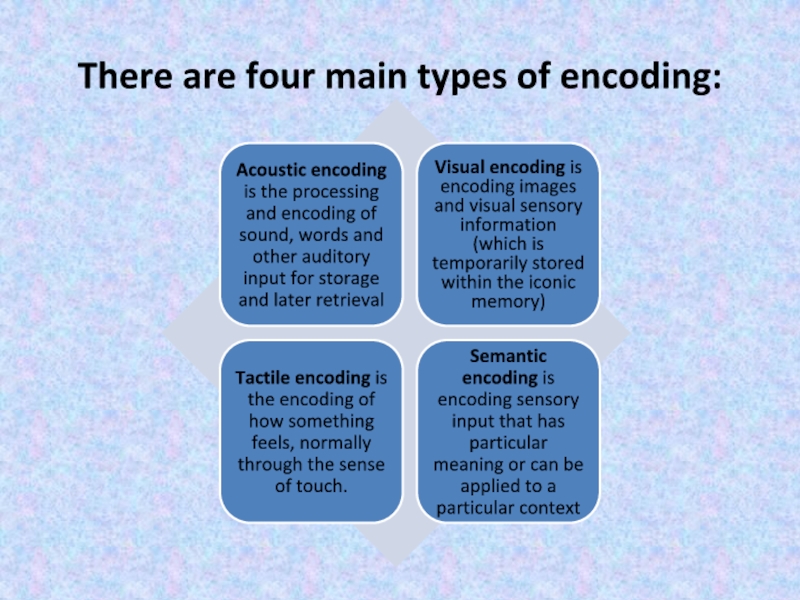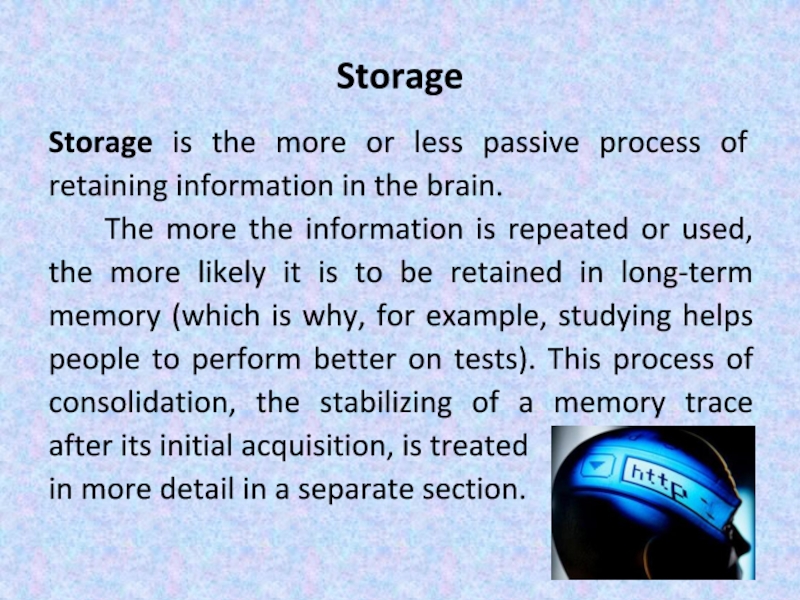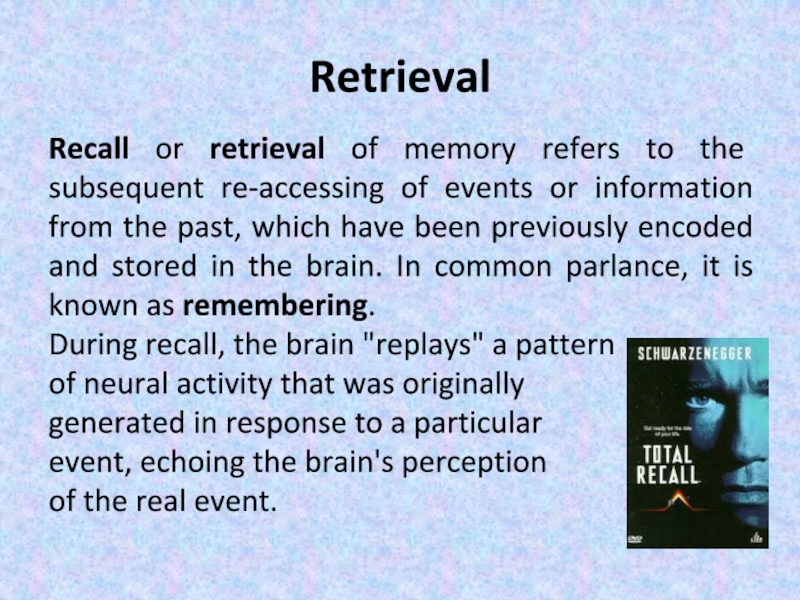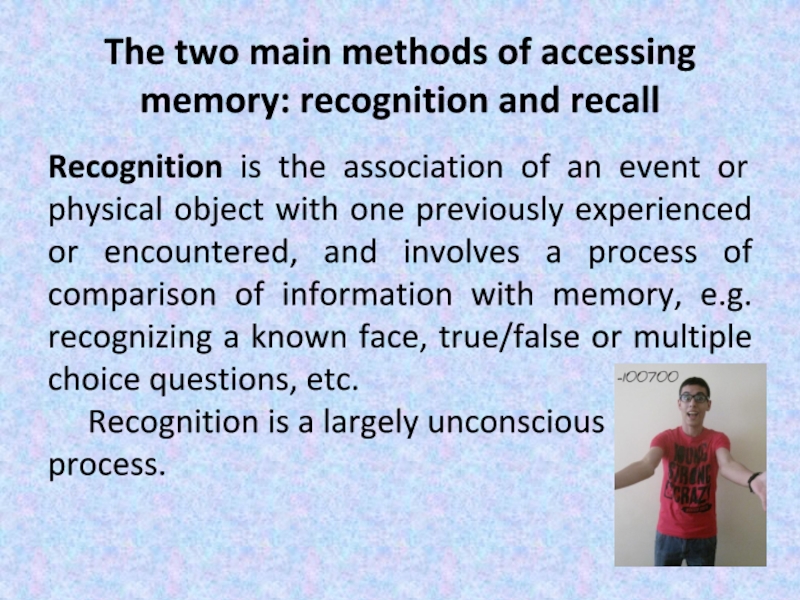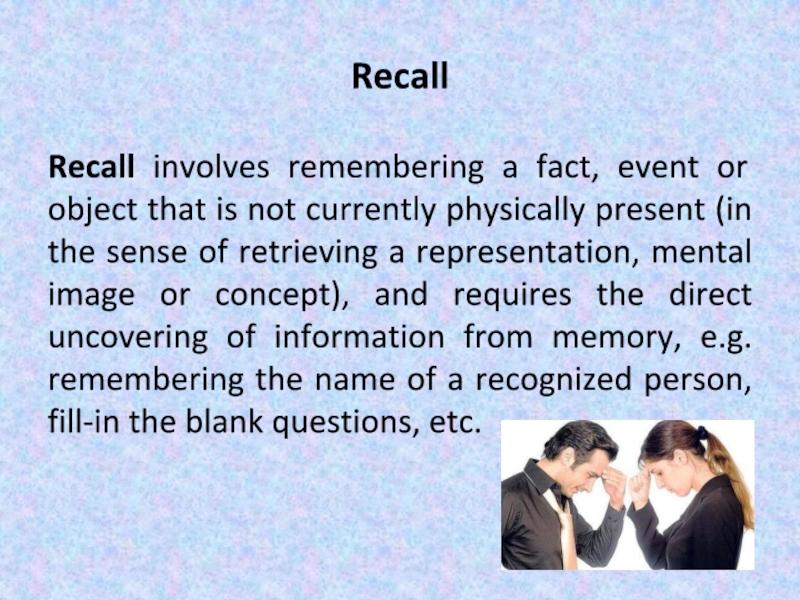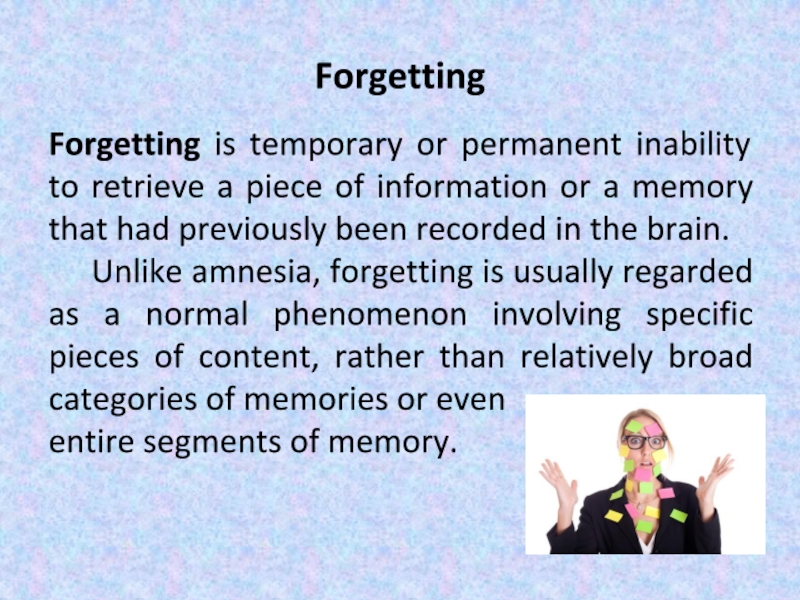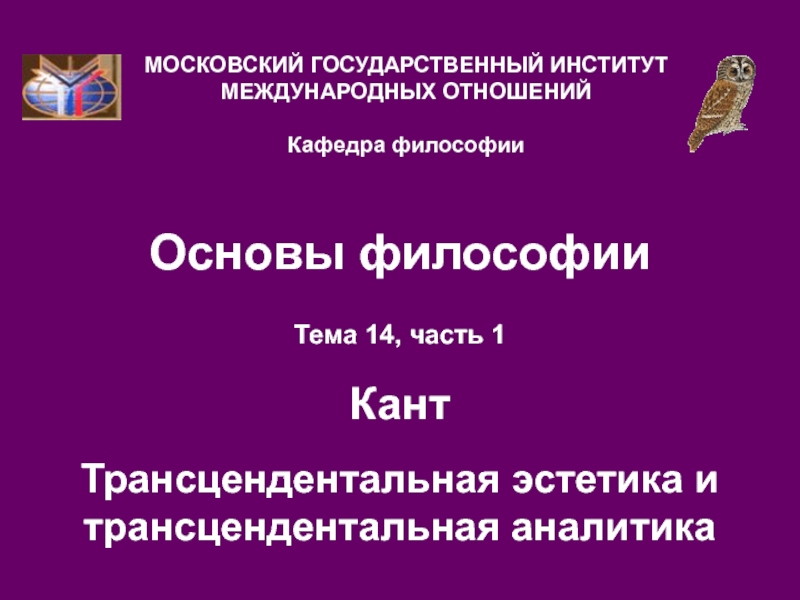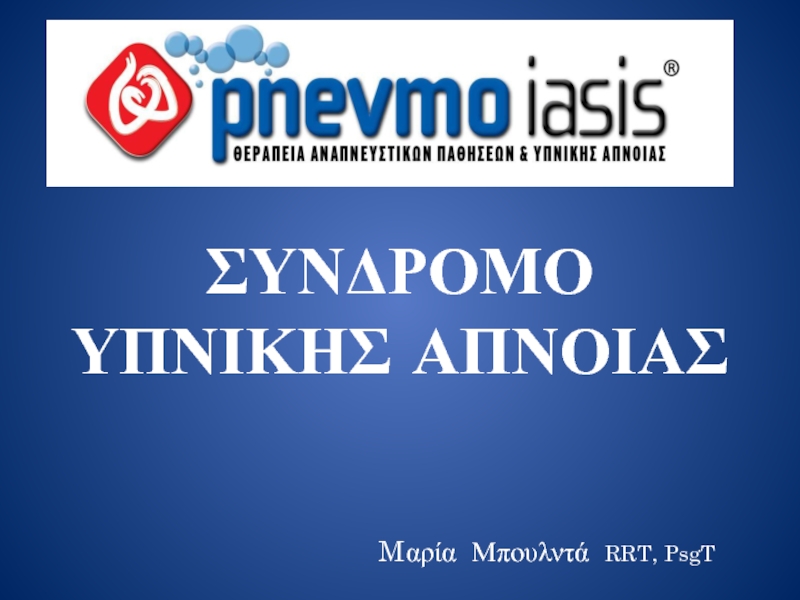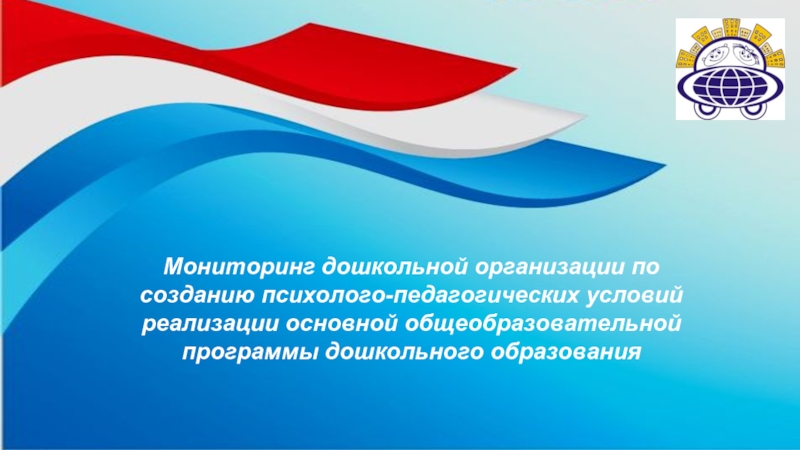- Главная
- Разное
- Дизайн
- Бизнес и предпринимательство
- Аналитика
- Образование
- Развлечения
- Красота и здоровье
- Финансы
- Государство
- Путешествия
- Спорт
- Недвижимость
- Армия
- Графика
- Культурология
- Еда и кулинария
- Лингвистика
- Английский язык
- Астрономия
- Алгебра
- Биология
- География
- Детские презентации
- Информатика
- История
- Литература
- Маркетинг
- Математика
- Медицина
- Менеджмент
- Музыка
- МХК
- Немецкий язык
- ОБЖ
- Обществознание
- Окружающий мир
- Педагогика
- Русский язык
- Технология
- Физика
- Философия
- Химия
- Шаблоны, картинки для презентаций
- Экология
- Экономика
- Юриспруденция
Cognitive psychic processes презентация
Содержание
- 1. Cognitive psychic processes
- 2. 1. Thinking is a cognitive process of
- 3. The process of thinking The process of
- 4. Types of Thinking Critical Thinking Creative Thinking
- 5. Critical Thinking is the process we use
- 6. Critical Thinkers Recognize underlying assumptions. Scrutinize arguments.
- 7. Creative Thinking is the process we
- 8. Creative Thinkers: Consider rejecting standardized formats for
- 9. Problem solving is an activity what includes elements of both of the thinking types:
- 10. Stages of thinking
- 11. 2. Imagination Process of formation of a
- 12. Content of imagination Imagination is considered as
- 13. Work of imagination Imagination is the power
- 14. Components of imagination
- 15. Mental imaginary — the capacity to 'see
- 16. Counterfactual thinking — the capacity to disengage
- 17. Symbolic representation — the use of concepts
- 18. Types of imagination Imagination Creative Reproductive
- 19. Depending on sphere of activity:
- 20. 3. Memory - ability to reproduce past
- 21. Types of memory
- 22. Long-term memory intended for storage of
- 23. Short-term memory acts as a kind of
- 24. Sensory memory is the shortest-term element of
- 25. Memory processes Memory refers to the processes
- 26. Encoding Encoding is a biological event beginning
- 27. There are four main types of encoding:
- 28. Storage Storage is the more or less
- 29. Retrieval Recall or retrieval of memory refers
- 30. The two main methods of accessing memory:
- 31. Recall Recall involves remembering a fact, event
- 32. Forgetting Forgetting is temporary or permanent inability
Слайд 21. Thinking
is a cognitive process of forming of mental images or
concepts. Also it means the process of cognitive problem solving through the sorting, organizing, and classification of facts and relationships.
Слайд 3The process of thinking
The process of thinking is the cognitive mental
process which, through analytic and synthetic operations, abstracting and generalizing ones, obtains products under the form of an idea, concept or judgment.
Слайд 5Critical Thinking is
the process we use to reflect on assess and
judge the assumption underlying our own and others ideas and efforts.
Critical thinking involves logical thinking and reasoning including skills such as comparison, classification, sequencing, cause/effect, analogies, deductive and inductive reasoning, planning, hypothesizing, and critique.
Critical thinking involves logical thinking and reasoning including skills such as comparison, classification, sequencing, cause/effect, analogies, deductive and inductive reasoning, planning, hypothesizing, and critique.
Слайд 6Critical Thinkers
Recognize underlying assumptions.
Scrutinize arguments.
Judge ideas.
Judge the rationality of these justifications
by comparing them to a range of varying interpretations and prospective.
Provide positive as well as negative appraisal.
Provide positive as well as negative appraisal.
Слайд 7Creative Thinking is
the process we use to develop ideas that
are unique, useful and worthy of further elaboration.
Creative thinking involves creating something new or original. It involves the skills of flexibility, originality, fluency, elaboration, brainstorming, modification, imagery, metaphorical thinking. The aim of creative thinking is to
stimulate curiosity and promote
divergence.
Creative thinking involves creating something new or original. It involves the skills of flexibility, originality, fluency, elaboration, brainstorming, modification, imagery, metaphorical thinking. The aim of creative thinking is to
stimulate curiosity and promote
divergence.
Слайд 8Creative Thinkers:
Consider rejecting standardized formats for problem solving.
Have an interest in
a wide range of related and divergent fields.
Take multiple perspectives on a problem.
Use trial-and-error methods in their experimentation.
Have a future orientation.
Have self-confidence and trust in
their own judgment.
Take multiple perspectives on a problem.
Use trial-and-error methods in their experimentation.
Have a future orientation.
Have self-confidence and trust in
their own judgment.
Слайд 112. Imagination
Process of formation of a mental image of something that
is neither perceived as real nor present to the senses, the ability to confront and deal with reality by using the creative power of the mind; resourcefulness.
Слайд 12Content of imagination
Imagination is considered as the power to recombine the
materials furnished by experience or memory, for the accomplishment of an elevated purpose; the power of conceiving and expressing the ideal.
A mental image formed by the action of the imagination as a faculty; a conception; a notion.
A mental image formed by the action of the imagination as a faculty; a conception; a notion.
Слайд 13Work of imagination
Imagination is the power of reproducing images stored in
the memory under the suggestion of associated images (reproductive imagination) or of recombining former experiences in the creation of new images directed at a specific goal or aiding in the solution of problems
(creative imagination).
(creative imagination).
Слайд 15Mental imaginary
— the capacity to 'see things in the mind's eye'
— is the most obvious concomitant of imagination. If we ask someone to imagine themselves on holiday, they may report sights, smells, sounds, and tastes from an actual holiday, that is, memories of past experiences stored or accessed in the form of images.
Imagination is not necessarily or exclusively image based. Such processes are likely to involve verbal as well as non-verbal or imaginal thinking.
Imagination is not necessarily or exclusively image based. Such processes are likely to involve verbal as well as non-verbal or imaginal thinking.
Слайд 16Counterfactual thinking
— the capacity to disengage from reality in order to
think about events and experiences which have not actually occurred and might never occur — is a crucial feature of much imaginative thought. Counterfactual imagining is also involved in contemplating potential courses of action, fantasy and pretence, and understanding other people's thoughts, beliefs, and desires, all of which are likely to involve verbal as well as non-verbal processes.
Слайд 17Symbolic representation
— the use of concepts and images to evoke or
represent real-world entities, or the use of one set of real-world entities to evoke others. Imagination appears distinctive in the quality and scope of the symbolism involved.
Thus a sequence of notes may be 'heard' as a mountain stream; a child engaged in a pretend fight readily accepts that an ordinary twig 'is' a sword; an adult may believe in life after death, or that supernatural beings can travel through solid objects.
Thus a sequence of notes may be 'heard' as a mountain stream; a child engaged in a pretend fight readily accepts that an ordinary twig 'is' a sword; an adult may believe in life after death, or that supernatural beings can travel through solid objects.
Слайд 18Types of imagination
Imagination
Creative
Reproductive
helps to create new original images and ideas
uses already
created images and ideas
Слайд 203. Memory
- ability to reproduce past experience; one of the fundamental
properties of the nervous system, manifested in the ability to store information concerning bodily reactions and events in the environment and to introduce this information repeatedly into the consciousness and behavior over a long period of time.
Слайд 22Long-term memory
intended for storage of information over a long period
of time.
Despite our everyday impressions of forgetting, it seems likely that long-term memory actually decays very little over time, and can store a seemingly unlimited amount of information almost indefinitely.
Despite our everyday impressions of forgetting, it seems likely that long-term memory actually decays very little over time, and can store a seemingly unlimited amount of information almost indefinitely.
Слайд 23Short-term memory
acts as a kind of ‘scratch-pad’ for temporary recall of
the information which is being processed at any point in time, and has been referred to as "the brain's Post-it note". It can be thought of as the ability to remember and process information at the same time. It holds a small amount of information (typically around 7 items or even less) in mind in an active, readily-available state for a
short period of time (up to a minute).
short period of time (up to a minute).
Слайд 24Sensory memory
is the shortest-term element of memory. It is the ability
to retain impressions of sensory information after the original stimuli have ended. It acts as a kind of buffer for stimuli received through the five senses of sight, hearing, smell, taste and touch, which are retained accurately, but very briefly. E.g., the ability to look at something and remember what it looked like with just a second of observation is an example of sensory memory.
Слайд 25Memory processes
Memory refers to the processes that are used to acquire,
store, retain and later retrieve information. There are three major processes involved in memory: encoding, storage and retrieval.
Слайд 26Encoding
Encoding is a biological event beginning with perception through the senses.
The process of laying down a memory begins with attention, in which a memorable event causes neurons to fire more frequently, making the experience more intense and increasing the likelihood that the event is encoded as a memory.
Emotion tends to increase attention.
Only then are the actual sensations
derived from an event processed.
Emotion tends to increase attention.
Only then are the actual sensations
derived from an event processed.
Слайд 28Storage
Storage is the more or less passive process of retaining information
in the brain.
The more the information is repeated or used, the more likely it is to be retained in long-term memory (which is why, for example, studying helps people to perform better on tests). This process of consolidation, the stabilizing of a memory trace after its initial acquisition, is treated
in more detail in a separate section.
The more the information is repeated or used, the more likely it is to be retained in long-term memory (which is why, for example, studying helps people to perform better on tests). This process of consolidation, the stabilizing of a memory trace after its initial acquisition, is treated
in more detail in a separate section.
Слайд 29Retrieval
Recall or retrieval of memory refers to the subsequent re-accessing of
events or information from the past, which have been previously encoded and stored in the brain. In common parlance, it is known as remembering.
During recall, the brain "replays" a pattern
of neural activity that was originally
generated in response to a particular
event, echoing the brain's perception
of the real event.
During recall, the brain "replays" a pattern
of neural activity that was originally
generated in response to a particular
event, echoing the brain's perception
of the real event.
Слайд 30The two main methods of accessing memory: recognition and recall
Recognition is
the association of an event or physical object with one previously experienced or encountered, and involves a process of comparison of information with memory, e.g. recognizing a known face, true/false or multiple choice questions, etc.
Recognition is a largely unconscious
process.
Recognition is a largely unconscious
process.
Слайд 31Recall
Recall involves remembering a fact, event or object that is not
currently physically present (in the sense of retrieving a representation, mental image or concept), and requires the direct uncovering of information from memory, e.g. remembering the name of a recognized person, fill-in the blank questions, etc.
Слайд 32Forgetting
Forgetting is temporary or permanent inability to retrieve a piece of
information or a memory that had previously been recorded in the brain.
Unlike amnesia, forgetting is usually regarded as a normal phenomenon involving specific pieces of content, rather than relatively broad categories of memories or even
entire segments of memory.
Unlike amnesia, forgetting is usually regarded as a normal phenomenon involving specific pieces of content, rather than relatively broad categories of memories or even
entire segments of memory.
